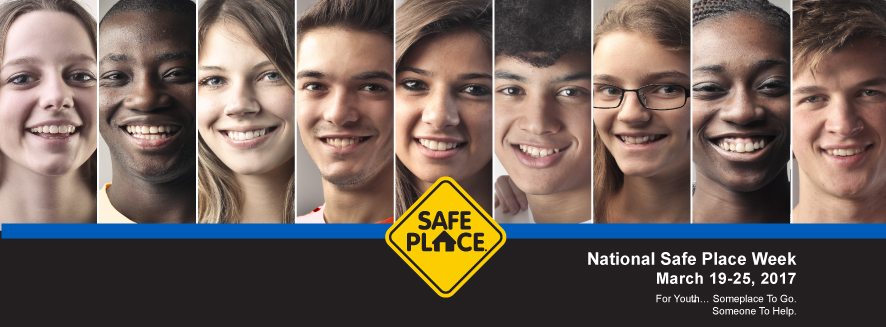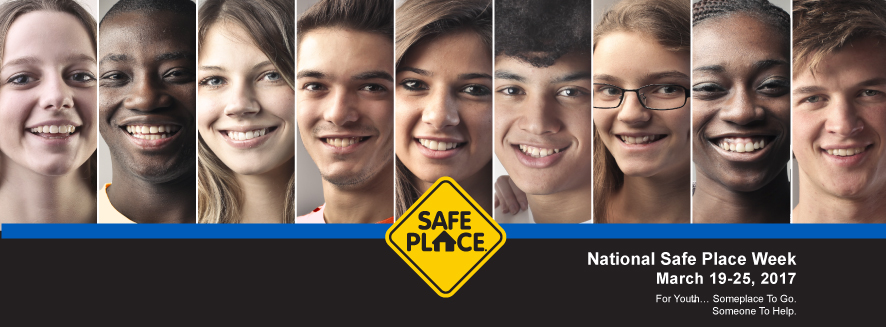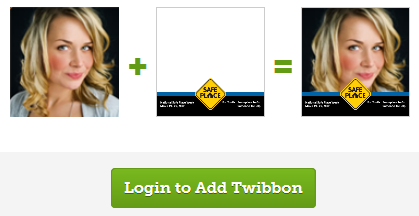Written by: Elizabeth Smith Miller, Director of Marketing & Events, National Safe Place Network
Are you one of the 41% of individuals who makes one or more New Year’s resolutions? In 2017, the top 5 New Year’s resolutions included:
- Lose Weight (21.3%)
- Life/Self Improvements (12.3%)
- Better Financial Decisions (8.5%)
- Do more exciting things (7.1%)
- Spend more time with family/close friends (6.3%)
According to research, only 9.2% of people felt they were successful in achieving their resolution. The number one reason for failed resolutions is the lack of a clear goal. NSPN is making it easy for you to beat the odds by helping your organization create clear goals for top resolutions.
Lose “Weight”
Stress will make you feel like you have the weight of the world on your shoulders. You can lose this “weight” with the help of NSPN. Organizational Development members can shed some stress by taking advantage of benefits already available including:
- Crisis debrief for staff and volunteers
- Ace the audit tips and consultation
- Department specific consultation and support
If there’s an area where your organization is struggling and could use some help, let NSPN help lift the weight off of your shoulders.
Maybe you’re thinking of a different type of weight… Does your inbox seem pretty hefty after the holidays? Perhaps you’re deleting emails without reading them? Take some time to go through your inbox and make some updates. Consider updating your profile or preferences. Many businesses send emails based on interests you have selected or information you have provided in your profile. For example, occasionally, NSPN may send emails to individuals with a specific job role or to organizations in a specific regions. If your information is not correct in your profile, you may receive an email that isn’t helpful to you. Consider logging in to your NSPN profile and update your information to make sure you’re only receiving information that fits your needs at www.nspnetwork.org/login. Your user name is [merge data].
Life/Self Improvements
In the youth and family services field, self-improvements are critical. Not only do individuals want to better themselves for a successful career, the lives of young people depend on continued growth of knowledge and skills. Every year, organizational leaders are making the choice to become a Professional Development member to help enhance the skills and abilities of their staff. If you’re a Professional Development member, you already have access to the following benefits (plus more) at no extra cost:
- Personalized development plans and self-care plans
- Emerging Leaders Institute (launching March 7, 2018)
- Professional coaching for middle managers
- Access to Clinicians’ Coffee House web events and CEUs
- And more ways to develop professionally
Better Financial Decisions
Sometimes the best and easiest financial decisions include taking advantage of benefits you already have. If you’re an NSPN member, you can save money by taking advantage of discounts already offered to your organization. Base members receive discounts on NSPN events including:
If you are an Organizational Development, Professional Development, or Training Center member, you have deeper discounts and even FREE access to some events and additional resources. If you’re not already a member, you can achieve your resolution of making better financial decisions by becoming one. Base membership is only $200 and provides a multitude of benefits to your organization. Join today here.
Do More Exciting Things
If traveling to Louisville, KY for Focus 2018 or having NSPN create a personalized training just for your organization isn’t exciting enough, consider doing something new! NSPN is the only membership association that customizes benefits to fit the needs of its members. If you have a need – or an exciting idea – connect with the membership team to discuss ways we can help.
Spend More Time with Family and Close Friends
All NSPN members have access to NSPN Connect. NSPN Connect is a forum where member of all levels can network, share resources and ideas, and have discussions around impactful topics. Log in to NSPN Connect today and ask a question about how something is done in another organization or share some ideas you find helpful. Feel free to upload documents to share with others. Licensed Safe Place agencies have access to Safe Place Connect and National Youth Advisory Board Collaboration Committee (YCC) members have access to YCC Connect. If you are part of the Network in more than one way (NSPN member, licensed Safe Place agency, and/or a YCC member), you have access to each forum based on your affiliation.
Ultimately, whatever your resolution is for your organization, NSPN wants to help remind you that you have support. Together we can!














